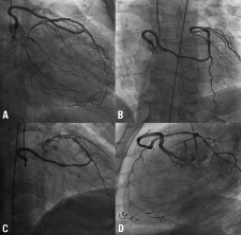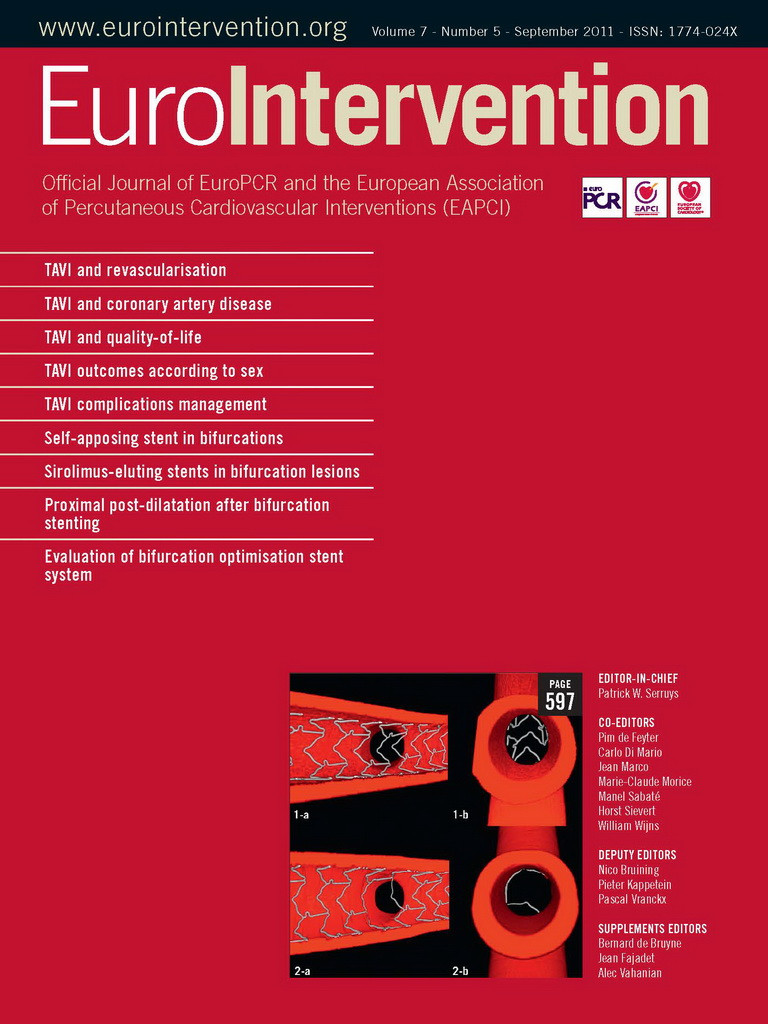Case
A 57- year-old male patient presented with stable angina pectoris, with a history of diabetes mellitus, hypertension, dyslipidaemia as well as peripheral vascular disease. Coronary angiography showed significant stenosis in the middle and distal right coronary artery (RCA) and anomalous originating left main coronary artery (LMCA) from the upper and posterior side of right sinus valsalva (Figure 1). Distribution of LMCA was also unusual; it was coursing towards the middle left anterior descending artery (LAD) and attached to the middle LAD rather than branching to LAD and circumflex artery (CX) (Figure1). The CX was supplied retrogradely from the LAD. The view of the LMCA appeared like a “bypass graft” originating from the aorta and anastomosed to the middle LAD. There was no significant stenosis in the LAD, but, 90 % stenosis was observed in the middle non-dominant CX. Intervention to RCA was scheduled. The most common coronary anomaly is the CX arising from the proximal RCA with a 0.32-0.67% incidence1. LMCA origin anomaly is a rare situation2. Unusual branching of LMCA, as in our case, is probably the first case in the literature and due to its distribution and view, it could be called a “native bypass graft”.

Figure 1. Left coronary system in different projections (A: Anterior caudal view, B: Anterior cranial view, C: Right anterior oblique cranial view and D: Spider view).
Conflict of interest statement
The author has no conflict of interest to declare.
References

